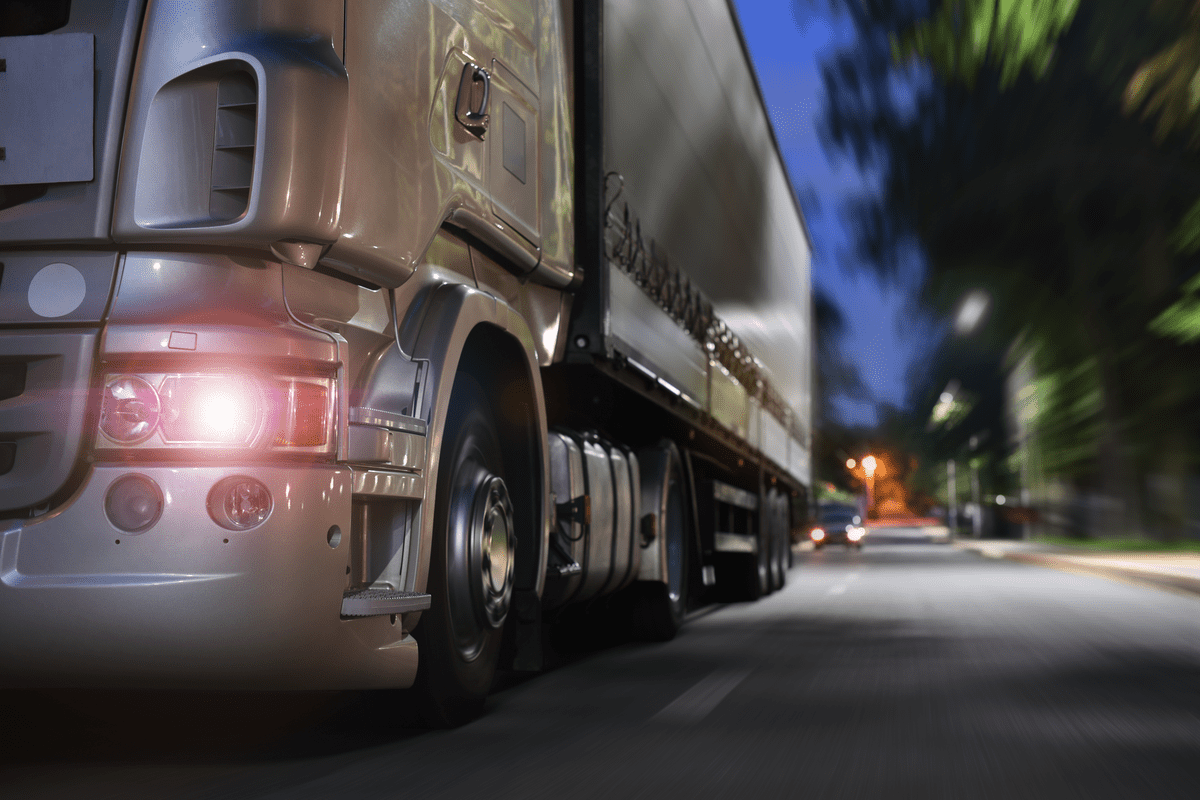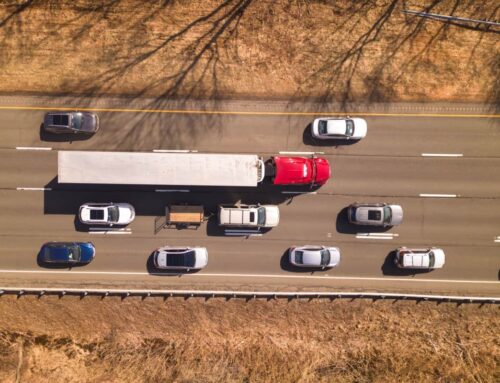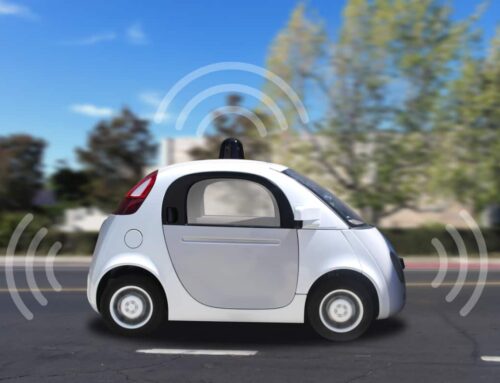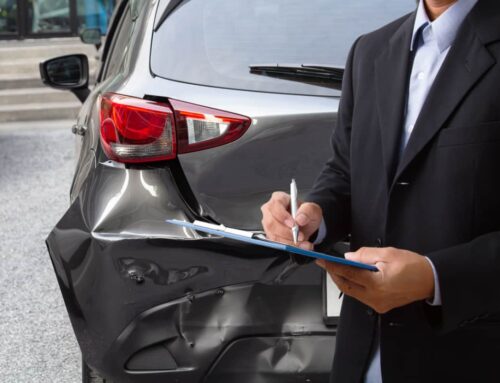A line of trucks rolls down the highway like a military convoy. It can appear as if the trucks are of one mind. Like a mechanical centipede, vehicles travel in tandem across American roadways.
These centipede convoys are transforming into a new phenomenon known as truck platooning, implementing new methodologies and technologies. In truck platooning, the large vehicles closely follow each other. The trucks traveling bumper to bumper allows for a reduction of air drag and improves fuel economy.
A partially automated safety system is built into the vehicles’ technology. This system enables the trucks to move in close proximity by communicating between each truck’s system, coordinating speeds and braking.
Theoretically, drivers still steer the vehicles and monitor the automated assistance systems, always ready to take over vehicle control if needed. This combination of autonomous vehicles and overseeing drivers is considered a way to stimulate the economy while prioritizing traffic safety.
Since the COVID-19 pandemic, the American supply chain has been strained and increased the need for truck drivers. Platooning is seen as a potential path to boosting the national economy by increasing the capacity for trucks and the movement of supplies along U.S. freight corridors.
Researching Platooning
Cooperative Adaptive Cruise Control (CACC) is already equipped with many tractor-trailers used to transport freight. To ensure precision, CACC includes sensors like radar, global positioning systems (GPS), and video cameras. Platooning is added to the EAR Program, which combines CACC with additional onboard sensors and vehicle-to-vehicle communication software.
The trucks can then exchange information by automatically adjusting the vehicle’s engine and brakes, controlling speed and separation distance. Drivers keep an eye on the road and weather conditions. They also control steering and lane-keeping.
Recent research conducted by Auburn University revealed that platooning trucks, following at around 30 feet, had a fuel saving of about 7%. Trucks that followed at around 50 feet saved an average of 10% on fuel. Truck fleets with trucks traveling 500 miles or more are best suited to adopting the program.
Previously, the FHWA conducted the Human Factors for Truck Platooning project that investigated drivers’ behaviors and how they responded when they encountered platooning trucks. The data was collected in a lab and a driving simulator.
In the data released from the safety research and development offices of the Federal Highway Administration (FHWA), the deployment of truck platooning is expected to reap benefits, including:
- Improvements in road efficiency – A smoother flow of traffic on U.S. roadways
- Innovations in vehicle technology innovation – The key system components use adaptive cruise control and collision avoidance systems, enhancing responsive and stable traffic patterns
- Increased fuel savings while becoming more climate-friendly – Early research reports reducing the fuel savings by as much as 10%
- Reduction of commercial freight – Full-scale deployment should reduce driver workload while improving driver safety and comfort
Currently, the FHWA is testing intelligent transportation systems while pushing for the Truck Platooning Early Deployment Assessment project. To get an assessment of the true impacts of the project, this means real trucks hauling real products on real roadways. The results can inform how to plan for platooning in the future and how state and local departments of transportation make decisions concerning truck platooning.
Local Research
Hany Hassan is an assistant professor of transportation engineering in the Louisiana State University’s (LSU) Civil and Environmental Engineering Department. The Louisiana Board of Regents recently awarded a $183,00 grant to study truck platooning and its effects on U.S. roadways.
Hassan’s research focuses on the optimum size of the trucks platooning (five or six) and how they travel (configured in one lane or two) while considering the behaviors of other traditional drivers when they encounter autonomous truck platooning. These factors should determine how truck platooning maximizes the mutual benefits to both the freight sector and the other traffic on the roadways.
Truck platooning is an especially intriguing and worthwhile concept for the U.S. Department of Transportation Federal Highway Administration. Properly operating, platooning has the potential to efficiently increase the highway’s vehicle capacity while saving on fuel and reducing the commercial freight’s operating costs and greenhouse gas emissions.
Hassan does not foresee the project eliminating drivers by replacing them with automated robots any time soon. Instead, he describes the project’s goals as slightly altering a driver’s job, and having real drivers manage the autonomous vehicles to increase road safety.
Hassan is also finding that this innovation of traffic technology may offer day-to-day challenges like long lines of trucks platooning may block highway exits.
The platooning truck project is evaluated and observed with a three-step process.
- Simulation tools are used to create various road environments and scenarios involving vehicle movement. These movements and measurements can evaluate the effects of platooning.
- A driving simulator lab will be used to determine anticipated driver behavior. This may predict whether platooning trucks will lead to more crashes or help reduce crashes.
- The last step in the testing method is a survey, polling drivers around the country regarding platooning trucks.
Adverse Research
Despite all the discussions about saving fuel and reducing carbon footprints, studies have found truck platooning does have some adverse impacts. In another recent study focusing on accident analysis and prevention, trucks coordinated into platoons were analyzed based on the Generalized Structure Equation Modeling (GSEM), which looks at variables like:
- Traffic conditions
- Driver characteristics
- Environmental conditions
- Vehicle interaction
It also studies crash attributes, including type and severity. Researchers poured over the vehicle information of more than three million individuals, cross-referencing 39 traffic locations in California to determine driving behaviors and responses.
Matching that traffic data with more than 1,4oo crash reports determined platooning vehicles are more likely to be involved in a rear-end and side-swipe crash. This applies to both trucks and non-trucks traveling as a platoon.
In most cases, human factors influence a crash. Age and gender play significant roles in all types of crashes. Individual drivers can improperly or suddenly make lane changes or not control their speed, which leads to rear-end or sideswipe crashes.
However, vehicles being used in coordinated strategies like platooning have been found to be a higher risk for sideswipe or rear-end crashes. On average, these crashes are also more severe than individual crashes.
Compiling all this data is crucial in providing valuable insights to transportation engineers and policymakers when considering how traffic conditions should find the balance between economically fruitful and increasingly safe.








